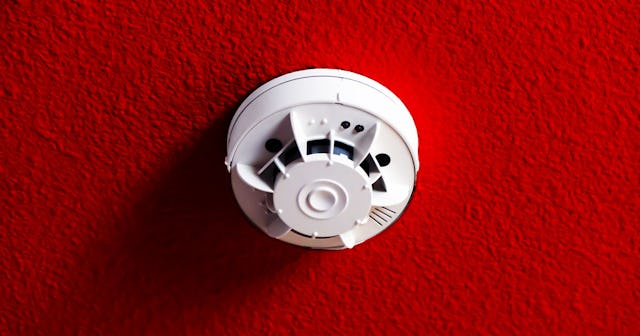What You Don’t Know About Carbon Monoxide Poisoning (But Really Should)

Everyone seems to have a horror story involving carbon monoxide—and the ones we consider having happy endings include people who, before it was too late, are able to avoid death. However, though the effects of carbon monoxide (CO) poisoning may not be lethal in some instances, this fact does not necessarily indicate a success story, since victims may not have emerged from their experience unscathed. Few of us understand that “escaping alive” doesn’t mean escaping the long term effects of CO poisoning.
There are two routes to carbon monoxide poisoning: acute (a single incident with exposure to high concentrations of CO) and chronic (the result of long-term, lower levels of CO). Like any other injury that involves impeded breathing, acute inhalation may cause “quite severe long-term neurological problems, with disturbances in memory, language, cognition, mood and behaviour…[and may lead to] a movement disorder similar to Parkinson’s disease” Chronic exposure can also result in asphyxiation-related brain injury.
Dawn Quintana knows this fact too intimately after she was poisoned in her workplace over a two month span. Doctors put her on total disability because they said she’d never be gainfully employed. In Quintana’s words: “They said my recovery has been basically that of a severe stroke victim. I can no longer multi-task or work on numbers since I used to do accounting.”
Each year over 400 Americans have CO-related deaths and approximately 50,000 visit emergency rooms—which to some may seem like a negligible amount. However, if you consider the unseen, lasting consequences of acute or chronic poisoning—figures that are not reflected in the statistics—it is clear that these numbers do not tell the entire story.
To avoid the dangers of CO poisoning, a little education goes a long way. Consider these facts:
Faulty furnaces are not the only CO source to blame.
We associate CO poisoning with in-home appliances. The fact is however, any CO-releasing agent is a potential danger. Other culprits include portable gas generators, clogged chimneys, wood or gas-burning fires, outdoor cooking grills, cars (especially those running in a closed garage), and even cigarettes.
CO, itself, does not have a smell, taste, or color, which is why it is often referred to as the “silent killer.”
The signature “rotten egg” smell we connect to CO in our homes is actually created by a blend of chemicals added intentionally only to warn consumers of a gas leak.
Cracking a window is not necessarily a safeguard.
Though CO poisoning is often described as inadequate airflow in an “enclosed” location, this is misleading. The risk of poisoning exists outdoors, too, because “exhaust fumes can get trapped and concentrated in an area with minimal air movement,” according to Nationwide.com.
No one know this better than Cassandra Free, whose son died of “open air carbon monoxide poisoning” while the family was boating.
Signs of poisoning may be interpreted incorrectly.
BanksPhotos/Getty
According to the Center for Disease Control, CO poisoning causes “headache, dizziness, weakness, upset stomach, vomiting, chest pain, and confusion”—all symptoms very similar to the flu. And, depending on what combinations of ailments present, victims may seem to be experiencing general fatigue.
There are clues, however, that can help differentiate carbon monoxide poisoning from other diagnoses. If the entire family is sick at the same time and symptoms subside when away from the home/source, this is a good indicator that illness is carbon monoxide-related. Also, if flu-like symptoms are heightened when gas appliances (etc.) are in use, poisoning should also be suspected.
When in doubt, however, it is always best to err on the side of caution: crack some windows, turn off appliances (when applicable), and move to an outside area with plenty of airflow. Then call 911.
Some populations are more susceptible than others.
Of course, anyone who is asleep or intoxicated stands the risk of missing the symptoms. The Mayo Clinic reports that older adults may be more likely to develop brain damage, and those with a history of breathing problems or anemia are more likely to get sick. CO is dangerous for young children, but it is particularly dangerous for unborn babies. According to Miriam Delomenie (et al) in a 2015 study, “ [CO] exposure during pregnancy can cause severe damage, including intrauterine hypoxia, serious neurological damage, and even fetal death.”
Being aware of the complete picture is one way to avoid tragedy. But experts believe there would be plenty more success stories if people would simply install CO detectors in their homes, ideally outside every bedroom, or at least one per floor.
And if you’re on vacation? Projectshout.com has the answer: “In hotels, guests are often unaware that they are sleeping next to boiler rooms or above a room with a fireplace; if you’re camping, CO can enter your tent from a smouldering BBQ outside; plan to take a [battery-operated] CO alarm to any future holiday destinations to ensure you are safe.”
One caveat: you need to test your CO alarm routinely to ensure that it is in good working condition. CO detectors only have about a 5-7 year lifespan, and you can determine if you need to replace yours by checking the date on it. If there’s no printed date and you are unsure of the purchase date, you’re probably due for a new CO monitor.
This article was originally published on